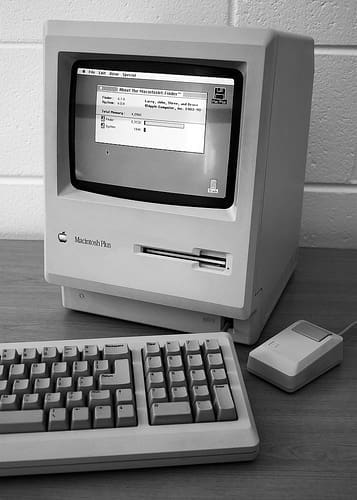A colleague of mine recently lamented that, despite all the hype, “technology in the classroom” is hardly a new concept. In the 1980s, when the first PCs were becoming affordable, schools across the country were setting up computer labs and claiming that learning would be forever changed. Today, everyone is talking about blended learning and different models for integrating technology into the educational experience of youth. Next week, The New York Times will host their “Schools for Tomorrow” conference on education and technology with a star-studded cast of experts from all sectors. And, while I am forever optimistic about the potential benefits that technology can/will have on education, my colleague does make me wonder whether we haven’t been here before.
So, what lessons might we learn from the days of the Apple IIe? And from you, the Reader, what can we look forward to in the coming months?
-
The education sector is a marketplace. In its early days, Apple focused sales of its new desktop computers on the education market, making the formal education system the target customer. For a corporate sales force, selling to the central office of a school district is much easier to tackle and more profitable than pitching to parents or directly to young people. So, even though platforms have also existed at home, and now mobile, and even though we have always known that young people spend 80% of their waking hours outside of the classroom, “education technology” will continue to be purchased, and therefore delivered, primarily through the formal education system. But, as more students access K-12 curriculum online, are companies missing an opportunity to address other customers? What companies are taking a more innovative approach?
-
You gotta play to win. Installing a new smart board is not going to improve student outcomes. A report released earlier this year highlighted that just 1 percent of 1,000 schools surveyed provided their students with a highly technology-integrated education, even though they all had the capacity. Leadership has to make a commitment to integration, teachers and parents have to be trained and prepared, and everyone needs technical support to make it work. What other barriers need to be removed to support effective use of technology for student learning?
-
Does it work? When I was in 5th grade, I took my first computer programming class. The thought that I might someday become a computer scientist never crossed my mind, but someone thought it should have. Yet, for women, technology in schools has not led to increased educational interest in technology as a field or career. In fact, the percentage of women graduating with computer science of engineering degrees declined through the 1990s and 2000s. Broadly speaking, the question of “Does it work?” is a great one for us evaluators. Who are you focused on? (Administrators? Teachers? Students? Parents?) What kind of outcomes are you trying to achieve with this audience? (Improved test scores? Increased engagement and interest in learning? Better communications? Changes in instruction?) There are several barriers to understanding effectiveness from the consumer perspective. On the content side, there is no standard for “quality.” The buyer is grossly unprepared to assess quality of content, and even if they were, the research behind “effectiveness” is limited and under-resourced. You are essentially left with a marketing pitch and adoption statistics. This is a field ripe for capacity building. Given the nature of software, (at least some of the) data should be incredibly easy to come by, yet little information is being shared. In the meantime, districts are making large investments without a clear understanding or articulation of what technology will (and won’t) do for student learning. Parents fare no better. Where can today’s consumers go to understand what works?
-
Does it save money? School systems want to believe that investments in technology will lead to cost savings. Open source curriculum, in particular, has been an exciting example of where school systems can save. Many blended learning models suggest that technology allows a school to operate more cost effectively than purchasing textbooks or paying high teacher salaries. On the other hand, upfront costs are high. Infrastructure in most districts is under-resourced. Scaling is still a challenge. It would be great to see a sophisticated ROI analysis done, while, again, being clear about what you get for the money.
So, although technology in the classroom may be a bit of old news, today we have an opportunity to crowdsource from the FSG community and learn from lessons of the past. And, perhaps, something new will come from that NYT conference next week. We look forward to hearing from you!
(Photo Credit: kenfagerdotcom)

